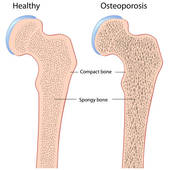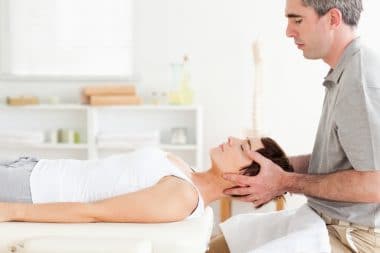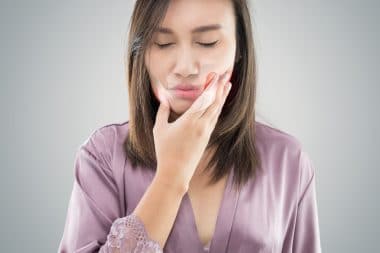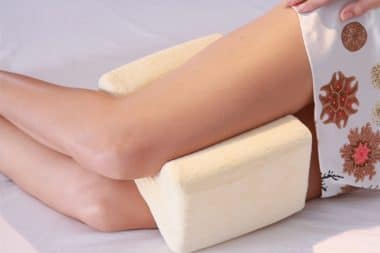Anything that is concerned with muscles, ligaments and joints is considered orthopedic. Disorders are ailments, injuries or diseases that cause knee problems, whiplash, dislocated shoulder, torn cartilages, foot pain and fibromyalgia. These are only a few of the known orthopedic disorders. There are as many treatments for orthopedic disorders as there are problems and injuries in the muscles, ligaments and joints.
Most common Orthopedic Problems
There are so many orthopedic problems it is almost impossible to list them. There are a few, however disorders and conditions are common and you will probably experience one or several of them at some point in your life.
- Arthritis is a rheumatic disease that has symptoms of pain, limited movement, swelling and pain in connective tissues. There are almost 50 million people in the United States who experience some type of arthritis. Arthritis is chronic or rarely changes and can progress slowly, and unfortunately many of the causes of arthritis are unknown.
- Osteoarthritis is a degenerative joint disease that middle aged and older adults experience. The joint cartilage breaks down as you age and it can occur in the hands, knees, spine or hips. Often you will hear osteoarthritis termed as degenerative arthritis or degenerative joint disease. It is very painful and one of the more common forms of orthopedic problems seen in doctor’s offices.
- Rheumatoid arthritis is a disease listed in the orthopedic section that causes sever inflammation of the joints. The inflammation is so severe that the functioning of the extremities becomes severely limited. Lumps generally form over the small joints and movement plus appearance is hampered. Adult rheumatoid arthritis last a lifetime and progressively gets worse. As an autoimmune disorder, rheumatoid arthritis occurs when the body’s immune system attacks its own healthy tissues and cells. It not watched, rheumatoid arthritis can also attack the heart and lungs.
- Fractures are definite orthopedic problems. Open fractures or compound fractures include there bone protruding through the skin or a wound that exposes the bone through the skin. A closed fracture or simple fractures is a broken bone seen, but not exiting the skin through a wound. Greenstick fractures are incomplete fractures. A small portion of the bone is broken; other fractures are straight line fractures across the bone and spiral fractures are actual breaks that spiral around the bone.
- Low back pain in an orthopedic condition that affects one out of ten people. Low back pain presents from mild and annoying to persistent and severe. If you have pain in your lower back your mobility is restricted and normal functioning is disturbed.
One of the most significant orthopedic health problems today, low back pain, can be caused by overuse and strenuous activities, improper use and exposure to continual vibrations. Traumas or injuries to the back can cause chronic low back pain and degeneration of the vertebrae is a definite cause of los back pain. If you are obese or have poor muscles tone you will experience low back pain and sprain that continually hurts. Did you know that smoking is a cause of low back pain? Studies have shown that smokers have increase occurrences of this type of orthopedic pain.
- Neck pain can come from injuries or damage to the muscles and ligaments of the neck, a herniated cervical disk or arthritis. Tumors and congenital abnormalities of the vertebrae can cause severe neck pain. Twisting and straining is also a nick problem and neck pain can also cause headaches and general aching in shoulders and the back.
Every bone, tissues and tendon in the body is a part of the skeleton system and a potential contributor to orthopedic conditions. There are ways to prevent some of the minor injuries, and the best ways to prevent injuries to your bones and tendons is to keep up an exercise plant. Stretching, running walking and aerobic helps not only the cardiovascular system but your bones and joints.
Preventing Orthopedic Disorders
Injury to the musculoskeletal system and orthopedic disorder can be prevented if control measures, exercising, and being aware of lifting, running, walking and working issues.
- A safe workplace that emphasizes musculoskeletal or orthopedic injuries is important. Preventing injuries in the workplace consists of evaluating the safety hazards and correcting. Have the proper ergonomic setups at your workstation. Repetitive strain injuries are an orthopedic risk for those who work in office situations.
- Lifting and moving heavy objects is a definite problem in workplace situations and cause orthopedic disorders. Lift close to your body rather than at the end of our reach. Ensure you have a very firm hold on the object and make sure you keep it balanced. If your feet are shoulder width apart you will have a solid base of support.
Always bend your knees and keep your back straight. Practice the lifting motion before you actually lift the object and think about how you will move before you lift.
Tighten stomach muscles as you lift. This will keep your back in good position and help prevent force on your spine.
Lift with our legs. Since your legs are stronger than you back muscles lifting with your legs gives you more support and strength. It is also recommended that you keep your eyes focused upwards to help with back straightening methods.
Do make sure the object is much too heave or awkward, ask for help! It is easier to require a favor from a coworker than strain your back and be out for weeks with back pain.
- The shoulder is a very important part or the orthopedic system. This joint has the widest range of motion of any joint in the body. According to the National Institute of Arthritis and Musculoskeletal and Skin Disease, the shoulder is the most unstable joint in the body. Shoulder problems include sprain dislocations, separations, strains, bursitis, shoulder tendonitis, and torn rotator cuffs. You can also have frozen shoulder that is very painful and causes a very limited range of motion.
- Orthopedic disorders need to include a discussion of hand and finger conditions. There are many different bones, ligaments and muscles that allow for dexterity in the hand. A problem with the phalanges or the 14 bones in the fingers of each hand, the metacarpal bones or the 5 bones in the middle of the hand, and the carpal bones or the 8 bones that crate the wrists.
Arthritis or joint inflammation happen in many areas of the hand and wrists can cause pain, scaring, and disfigurement. Osteoarthritis or a degenerative joint disease is slow-progressing and causes hands to curl in and be unusable.
Carpal tunnel syndrome is a very public condition where the median nerve is compressed. The median nerve is the provider of motor and sensory functions to the thumb and three middle fingers and there are problems that definitely occur with this syndrome. You will have difficult gripping objects, numbness and pain, swollen feeling in fingers and burning or tingling in the hand.
Ganglion cysts are fluid filled cysts that develop n the hand for no reason. You might experience wrist pain or just an annoying growth. Treatment is generally no necessary, but rest and splinting can help.
- Tendon problems include tendonitis and tenosynovitis. Tendonitis includes pain in the back of the elbow and forearm. This is cause by damage to the tendons the help bend the wrist backward.
Tendon problems include lateral epicondylitis or tennis elbow, medial epicodylitis or baseball elbow, rotator cuff tendonitis which is a should disorder and DeQuervains’s tenosynovitis that is tendon sheath swelling at the thumb.
Treatments for tendon problems include activity modification, ice, immobilization or splinting and steroid injections. You may also be required to use non-steroidal anti-inflammatory medication and as a last resort you might have to have surgery to relieve the symptoms of tendon problems.
Orthopedic disorders cover the gamut from tendons, bones to ligaments and back again. Keep your skeletal system functioning and in good healthy by eating right and exercising. Drink plenty of milk or fruits fortified with vitamin D. Take care of your orthopedic requirements to ensure that you are able to run around and throw a baseball to kids in the park.








